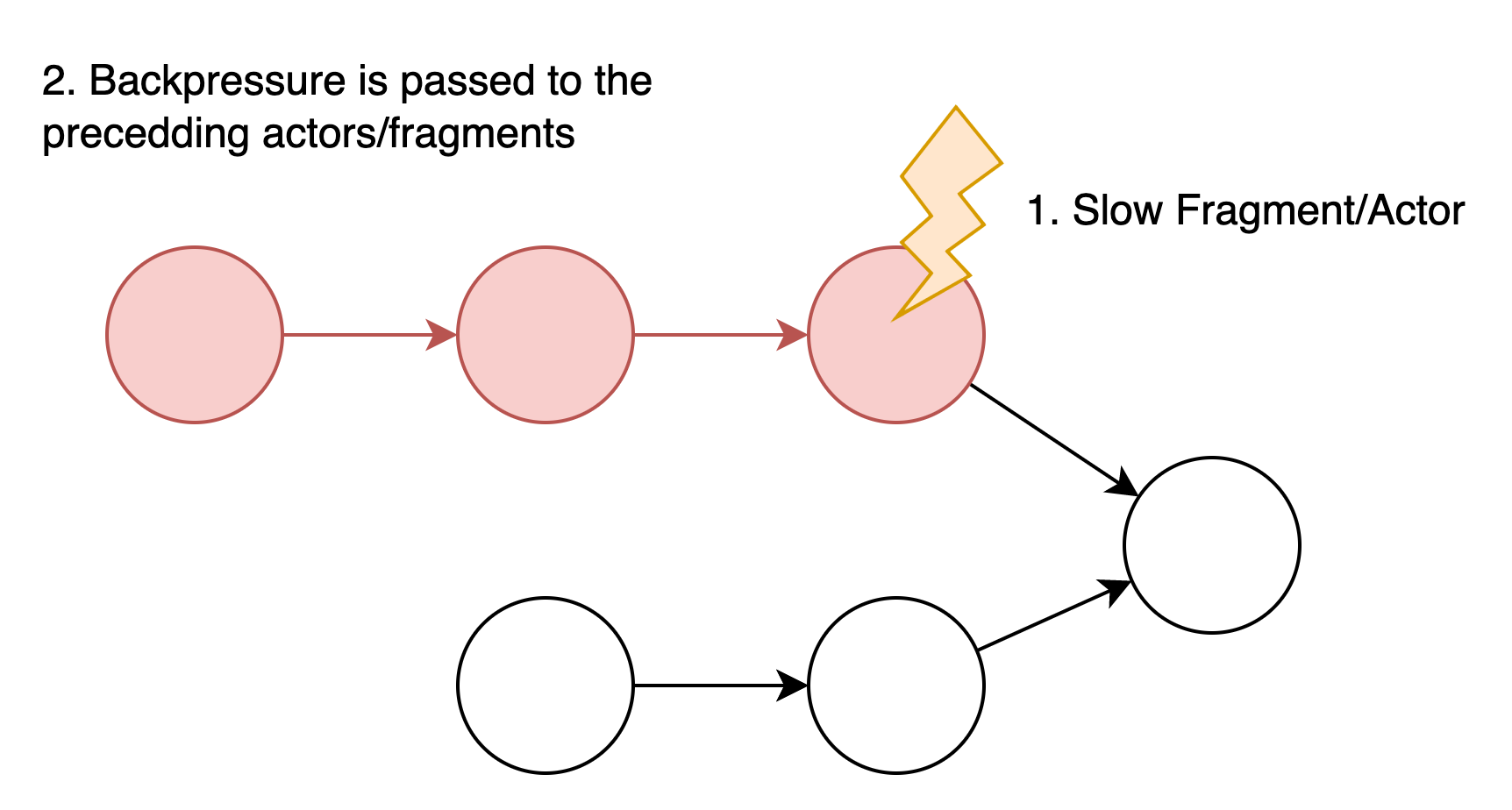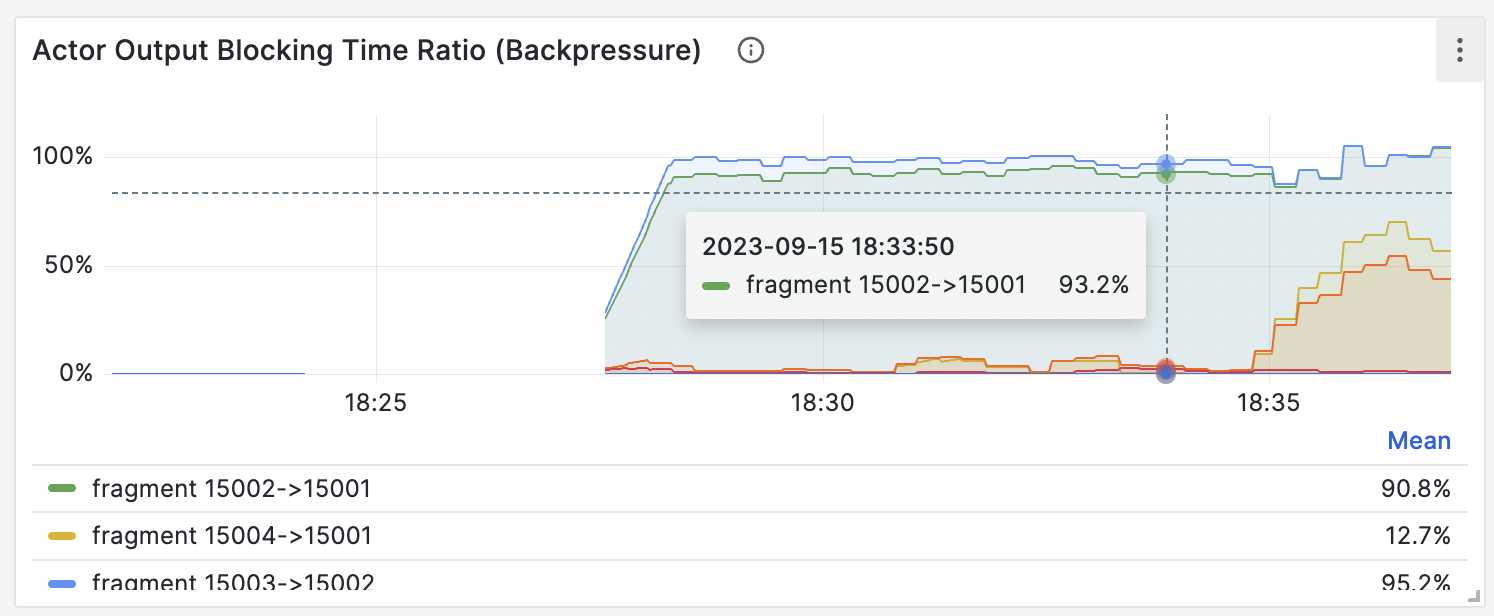Streaming performance
Overview
Each streaming job, for example, a materialized view, is composed of multiple fragments that form a Directed Acyclic Graph (DAG). Each fragment consists of multiple parallel actors, and each actor is comprised of one or more streaming operators interconnected. The RisingWave Dashboard provides a visualization of the actor/fragment topology for active jobs in the Actor/Fragment panel.
Occasionally, a streaming actor or fragment can become a bottleneck within the overall streaming job. This guide aims to assist you in identifying the bottleneck and providing solutions to address this issue.
Find out the back-pressured fragments
When an actor or fragment performs slower than others, it back-pressures its preceding actors/fragments. Thus, to find the root of backpressure, we need to find the frontmost actors/fragments in the DAG.

To accomplish this, refer to the Grafana dashboard and navigate to the "Streaming - Backpressure" panel. In the panel, find the channels with high backpressure and identify the frontmost one.

For example, in the image above, both 15002→15001 and 15003→15002 are high. Considering backpressure can be passed to preceding fragments, the root cause is probably 15001.
To find out the corresponding part in your SQL query, refer to the RisingWave Dashboard and access the "Fragment" panel. Additionally, run EXPLAIN CREATE MATERIALIZED VIEW … to see the query plan and find out the part corresponding to the problematic fragments.
Improve the performance of streaming query
Some performance issues are caused by heavy SQL queries, such as:
- Heavy aggregations such as
array_agg. - Joins with unreasonable amplification.
- Union (which needs to deduplicate rows) instead of Union ALL.
- UDF performance issues.
For these scenarios, it would be beneficial to consider rewriting your queries to optimize their performance.
If you encounter any difficulties or need assistance with the provided content, please don't hesitate to reach out to us for help. You can join our Slack channel #troubleshooting and ask your questions there. We are here to support you and address any issues you may have.




